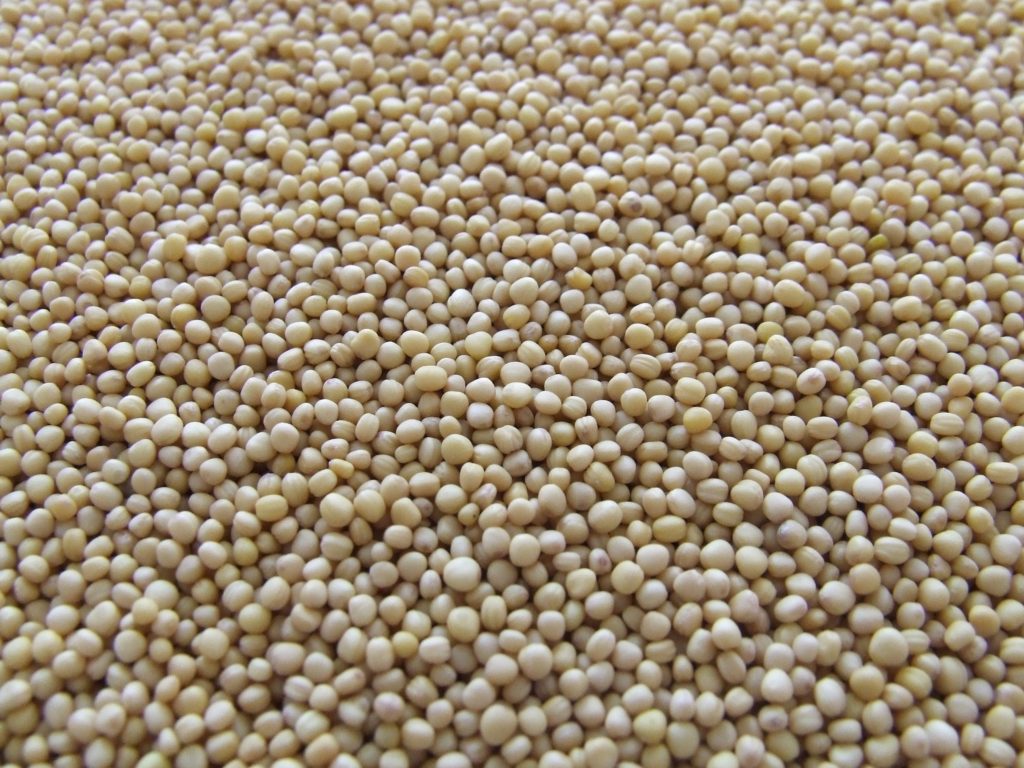Many people eat soy, drink soymilk and consume products with soy as an ingredient. I’m asked questions about soy frequently by people trying to eat a plant-based diet, so I thought I would address soy and your health..
Soy has many negative effects on health because it is difficult to digest, affects your hormones, and is closely linked to GMOs, pesticides, and harmful processing chemicals.
Soy protein is a complete protein but can be very hard to digest. The Chinese did not eat unfermented soybeans, because they contain quantities of natural toxins or “anti-nutrients” and are high in phytic acid. This means ingesting unfermented soy can prevent the body from absorbing other nutrients like calcium, magnesium, copper, iron, zinc, and particularly protein.
In China, soy was not used as a food until fermentation techniques were discovered in the Zhou Dynasty (1046–256 BC). When soy is fermented—as in miso, tempeh, or soy sauce—the soy nutrients are more digestible and easier to absorb.
Soy has been linked to gastric distress and pancreatic problems, including cancer, and it can impair our body’s uptake of amino acids.(1) It also contains goitrogens, which are known to suppress the functioning of the thyroid.(2)
Most soy on the market today is from genetically modified (GM) seed. 91 percent of soybeans planted in the United States are GM, and the rate is rapidly growing throughout the world, according to Natural News newsletter.(3)
Dr. Gregory Damato points out that “more than 95 percent of GM soy (and 75 percent of other GM crops) is engineered to tolerate glyphosate herbicide, the most common formulation of which is Roundup. (4)
Recent studies by French scientists on the Toxicity of Roundup and Glyphosate found this herbicide carcinogenic.(5)
They found it:
1. Causes cell cycle dysregulation, which is a hallmark of tumor cells and human cancers.
2. Inhibits DNA synthesis in certain parts of the cell cycle— the cells’ reproductive process, which underlies the growth and development of all living organisms.
3. Impedes the hatchings of sea urchins. (Sea urchins were used because they constitute an appropriate model for the identification of undesirable cellular and molecular targets of pollutants.) The delay was found to be dose dependent on the concentration of Roundup. The surfactant polyoxyethylene amine (POEA), another major component of Roundup, was also found to be highly toxic to the embryos when tested alone, and could therefore be a contributing factor.(6)
These reasons are some reasons why I don’t eat soy if I can avoid it, or any other genetically modified food or non-organically grown food.
I recommend reading more about glyphosate herbicide if you are eating non-certified organic foods.
Be aware that soy is added to tortillas, breads, fake meats, and many other foods, supposedly for the “health” benefit. In my opinion, it is really used as cheap filler.
Health and nutrition expert Dr. Joseph Mercola writes that the advertising industry has misled the public about the safety and health benefits of soy, as well as the widespread use of it in the Asian diet. He states, “A study of the history of soy use in Asia shows that the poor used it during times of extreme food shortage, and only when the soybeans were carefully prepared (e.g. by lengthy fermentation) to destroy the soy toxins.”(7)
He goes on to say that, contrary to some reports in the West, it is not the usual practice in Asian countries to feed soy milk to infants.(8) Be aware of this when you read food labels that refer to soy’s health benefits, even those that display an FDA statement that soy can help lower the risk of heart disease.
In 2000, two FDA employees, Daniel Doerge and Daniel Sheehan, were so worried about the danger of soy that they wrote a controversial letter to their employer, protesting the positive health claims for soy that the FDA was approving at the time.
They wrote: There is abundant evidence that some of the isoflavones found in soy—including genistein and equol, a metabolite of daidzen—demonstrate toxicity in estrogen sensitive tissues and in the thyroid. This is true for a number of species, including humans.Additionally, isoflavones are inhibitors of the thyroid peroxidase which makes T3 and T4.
Inhibition can be expected to generate thyroid abnormalities, including goiter and autoimmune thyroiditi s. There exists a significant body of animal data that demonstrates goitrogenic and even carcinogenic effects of soy products.Moreover, there are significant reports of goitrogenic effects from soy consumption in human infants.(9)
Think carefully about the effects that soy can have on the thyroid (our master gland which affects almost all aspects of our health) and estrogen. Many doctors and nutritionists are soy proponents. Be careful and research this yourself if you are concerned.
A billion-dollar industry advertises soy as the answer to many health issues, from heart disease to weight problems. Soy is frequently touted as the answer to women’s menopause hormone imbalances. This is one of the reasons why so many doctors and older women were happy to embrace it.
Soy and soy-based products contain isoflavones or phytoestrogens, which are plant-based estrogens. Soy is not the only food that contains phytoestrogens. There are other less controversial and more digestible foods with phytoestrogens you can include in your diet.
For men, eating soy isoflavones can significantly reduce testicular function and lower luteinizing hormone (LH) production, which is what signals the testicles to work. A high soy intake which potentially lowers level of LH increases the probability of estrogen dominance in men, contributing to hair loss, swollen and cancerous prostates, and insulin resistance.
Dr. Doris Rapp, MD, a leading pediatric allergist, asserts that environmental and food estrogens are responsible for the worldwide reduction in male fertility.(10)
Soy consumption has been linked with cancer in adults, notably breast cancer, as I read in an article by Jim Rutz. He went on to say: That’s why the governments of Israel, the UK, France, and New Zealand are already cracking down hard on soy… In sad contrast, 60 percent of the refined foods in US supermarkets now contain soy. Worse, soy use may double in the next few years because (last I heard) the out-of-touch medicrats in the FDA hierarchy are considering allowing manufacturers of cereal, energy bars, fake milk, fake yogurt, etc., to claim that “soy prevents cancer.”
It doesn’t…P.S.: Soy sauce is fine. Unlike soy milk, it’s perfectly safe because it’s fermented, which changes its molecular structure. Miso, natto, and tempeh are also okay, but avoid tofu.(11)
Soy can create allergic reactions. In 1986, Dr. Stuart Berger, MD, placed soy among the top seven allergens, one of the “sinister seven.”
Finally, completely avoid soy protein isolate. It is a byproduct of soybean oil processing that is found in a huge number of vegan foods. A standard soybean contains 40 percent protein, while soy protein isolate is usually about 95 percent protein. But it poses serious health risks.
The processing of soy protein isolate is done mostly in aluminum tanks that leach high levels of aluminum into the product. Then MSG, flavorings, preservatives, sweeteners, and synthetic chemicals are frequently added to help get rid of the “beany” taste and add more “meaty” flavor. In animal experiments, the test animals fed soy isolate developed enlarged organs, particularly the thyroid and the pancreas.
After the soybeans—which are mostly GMO varieties—are crushed to extract the oil, the leftover soy “chunks” (which still contain fiber, water, some fat, and other carbohydrates) then undergo another extraction process that involves hexane—a neurotoxin that is also a substantial component in gasoline.
The next step involves soaking these chunks in a chemical mixture (which commonly contains ammonia and hydrochloric acid) to help concentrate protein levels and achieve a sponge-like texture. Finally, the mixture is spray-dried.(12)
Soy protein isolate can only be made in factories. Healthy, whole foods should be possible to make in a kitchen. You can grind your own almond flour at home from almonds. You can make your own seitan (wheat meat) at home. You can make your own rice milk or hemp milk at home with a blender and some whole-food ingredients.
The only way to make soy protein isolate is by using extremely flammable and hazardous chemicals, like hexane, and extreme temperatures that you could not possibly obtain in a kitchen setting.
Hexane is not used in the production of organic soy protein isolate. For a list of which protein bars and soy burgers are made using hexane-extracted soy protein isolates and which aren’t, go to: www.cornucopia.org/hexane-guides/hexane_guide_bars.html.
As I researched soy, I came to seriously reconsider its use. I avoid it in most forms, but I do, however, use organic, non-GMO fermented soy sauce. I also use organic miso and tempeh occasionally. There are alternative organic misos now that are made with brown rice, garbanzo beans, and barley—and they taste terrific. I buy these instead of the soy variety.
In conclusion, I do not recommend soy or soy protein for a healing diet. If you are going to buy soy, purchase certified organic, sprouted, non-GMO soy because it won’t be from genetically modified seeds. If you must buy soy, purchase sprouted and/or fermented, non-GMO, certified organic soy for a more digestible and less harmful soy protein, and avoid soy protein isolates.
copyright@nancyaddison2016
Check out Nancy Addison’s #1 best selling, award-winning, healthy cookbooks! She has written 6 of them! Click here to view her author page on Amazon.
Sources:
1. Damato, Gregory. (2009, May 27). “GM-Soy: Destroy the Earth and Humans for Profit.” Natural News. http://www.naturalnews.com/026334_soy_Roundup_GMO.htm l#ixzz1RzIZAWwh
2. Fallon, Sally, & Enig, Mary G. (2000, April–May). “Newest Research on Why You Should Avoid Soy.” Nexus, 7(3). http://www.eregimens.com/therapies/Diet/Soy/NewestResearc honwhyYouShouldAvoidSoy.htm
3. Damato, Gregory. (2009, May 27). “GM-Soy: Destroy the Earth and Humans for Profit” Natural News. http://www.naturalnews.com/026334_soy_research_Roundup.htm
4. Ibid.
5. Mercola, Joseph. (2012, June 9). “New Evidence Against These Cancer-causing Foods – and the Massive Cover-up Effort.” http://articles.mercola.com/sites/articles/archive/2012/06/09/monsanto-roundup-found-to-be-carcinogenic.aspx
6. Bellé, R., et. al. (May 9, 2012). Journal of Toxicology and Environmental Health, Part B: Critical Reviews, 15(4): 233-237. http://www.tandfonline.com/doi/abs/10.1080/10937404.2012.67 2149
7. Mercola, Joseph. (2009, January 9). “Learn the Truth About Soy. Just How Much Soy Do Asians Eat?” http://articles.mercola.com/sites/articles/archive/2000/01/09/truth-about-soy.aspx
8. Ibid.
9. Sheegan, Daniel M., & Doerge, Daniel R. (1999, February 18).Letter to Dockets Management Branch (HFA-305). The letter was posted on ABCnews.com as “Scientists Protest Soy Approval.”
10. Bellatti, Andy. “You Ask, I Answer: Soy Protein Isolate.” Medpedia. Belatti is a commenter on the original article by Kelsey Lepp. http://smallbites.andybellatti.com/you-ask-i- answer-soy-protein-isolate/
11. Rutz, Jim. (2006, December 12). “Soy is Making Kids ‘Gay’.” WND Commentary. http://www.wnd.com/2006/12/39353/
12. Cousens, Gabriel. (2008). There Is a Cure for Diabetes. Berkeley, CA: North Atlantic Books.
copyright@nancyaddison2015
Check out Nancy Addison’s #1 best selling, award-winning, healthy cookbooks! She has written 6 of them! Click here to view her author page on Amazon.
Leave a comment and join the conversation!





